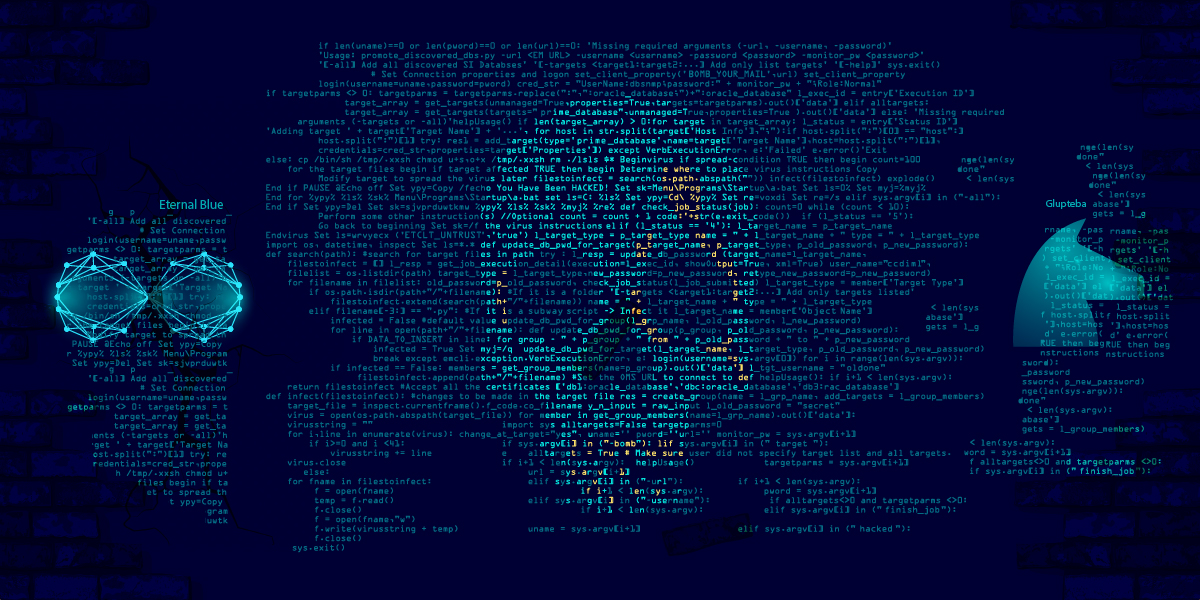Glupteba malware was first seen in the year 2014 and was active till 2020 when it faded off. But recently we at K7 Labs noticed a spike in the Glupteba malware in our K7 Enterprise Security telemetry.
On analyzing the telemetry, we came across a huge number of hits for a handful of specific systems, and on pivoting further, we realised that each of those systems were hit by tools handed down from the Equation Group and Shadow Brokers, namely EternalBlue and DoublePulsar. Along with these, many of those systems had the Ranumbot malware as well. The collective presence of all of these malware families led us on to the trail of their next of kin, Glupteba.
Checking the timestamp on which the malware occurrences are found in the telemetry, we noticed that they were found at regular intervals and, therefore, must have tallied with some scheduled spread from the infected system. We inferred that there must be at least one unprotected, probably unpatched, system that must have been infected and it was bombarding other protected systems on the network, a common scenario in many Enterprise networks.
The Firewall telemetry events for these systems were checked along with the corresponding IDS rules, viz. MS17-010 TRANS2 SECONDARY REQUEST and MS17-010 Echo Response. They were all found to be attempts to exploit SMB vulnerabilities. We were able to confirm that the local and remote IPs were internal, and that clearly indicates that there was attempted lateral movement within the LAN.
Basically Glupteba malware are Remote Access (Backdoor) Trojans, capable of spreading using EternalBlue exploits. The malware, once it has breached a system, looks for SMB vulnerabilities and tries to exploit them to move laterally within the LAN.
Taking a look at one of the recent Glupteba malware samples, we realise it still prefers the Go language. As a first step of its execution it copies itself to another location and creates persistence by changing the autorun values in the registry. The self-copied malware is placed in: C:\Windows\rss\csrss.exe
Csrss.exe drops a file named windefender.exe which is the Ranumbot malware, another backdoor capable of establishing remote connections and exfiltrating system information.

This Glupteba malware attempts to evade detection on Windows Defender by modifying the registry at HKEY_LOCAL_MACHINE\SOFTWARE\Microsoft\Windows Defender\Exclusions\Paths to add exclusions to the paths wherever it is located, and uses the command line utility to bypass the default firewall.
The registry HKCU\Software\Classes\mscfile\shell\open\command with default key value is created by the malware in order to abuse CompMgmtLauncher.exe and bypass UAC (User Account Control). Consequently, an unchallenged execution or download of further payload is enabled.

The malware collects details about the system and stores the configuration information in the registry key HKCU\Software\ Microsoft\a31263b0. Some of the system information that will be POSTed to the C2 include build_number, firmware_type, mac, machine_guid, secure_boot, etc, along with the list of softwares installed in the machine. The consumption of this registry key along with a previously predominant name “TestApp”, has been seen quite a lot amongst Glupteba malware, and can definitely be considered as an Indicator of Compromise (IoC). The purpose of storing the data this way is that it can be used by the malware in later stages of the infection chain.

The malware uses the registry key TSAppCompat to check if the system is running in application compatibility mode and the registry key TSUserEnabled, to check if the users can log on to the terminal server

It then defines a default access permission list for the computer using the DefaultAccessPermission and EveryoneIncludesAnonymous registries to allow anyone to login without a password.

A malicious network connection is made to 172.67.137.101 and to “hxxps://sndvoices.com”, “hxxps://2makestorage.com”, “hxxps://stiambat.com”, “hxxps://spolaect.info”. All of these connections attempted are malicious sites to which the exfiltrated data can be sent.

Trying to connect to hxxps://blinkroast.info/c544b71e73e7595b36b20b7fcb8b4204/watchdog.exe failed. The URL not being active anymore, we were not able to grab the file for further analysis.
Glupteba’s infection vectors in the past have included downloading pirated software, fake installers or adware. Once the malware has entered the system it looks for a specific list of vulnerabilities and uses them for lateral movement to enter into other systems connected in the network. In our case it is very evident that this Glupteba malware attempts to exploit SMB vulnerabilities to move laterally within the LAN.
Here at K7, proactively monitoring our K7 Ecosystem Threat Intelligence, we were able to see that Glupteba is back on active mode. Installing a reputed product like K7 Endpoint Security will keep you protected from all kinds of threats.
Indicators Of Compromise(IOCs)
| MD5 | K7 Detection Name |
| 1a7e7794c44762d411d383fac32d45f2 | Trojan ( 0057c9a81 ) |
| 6512ae7c9f36206f6433f78296102419 | Trojan ( 0055a98e1 ) |
MITRE ATT&CK
| Execution | Scheduled Task (T1053) |
| Service Execution (T1035) | |
| Command-Line Interface (T1059) | |
| Persistence | Registry Run Key / Startup Folder (T1060) |
| Hidden Files and Directories (T1158) | |
| New Service (T1050) | |
| Privilege Escalation | Bypass User Account Control (T1088) |
| Defensive Evasion | Bypass User Account Control (T1088) |
| Disabling Security Tools (T1089) | |
| File and Hidden Files and Directories (T1158) | |
| File Deletion (T1107) | |
| Process Injection (T1055) | |
| Modify Registry (T1112) | |
| Discovery | System Owner/User Discovery (T1033) |
| Security Software Discovery (T1063) | |
| Lateral Movement | Exploitation of Remote Services (T1210) |








